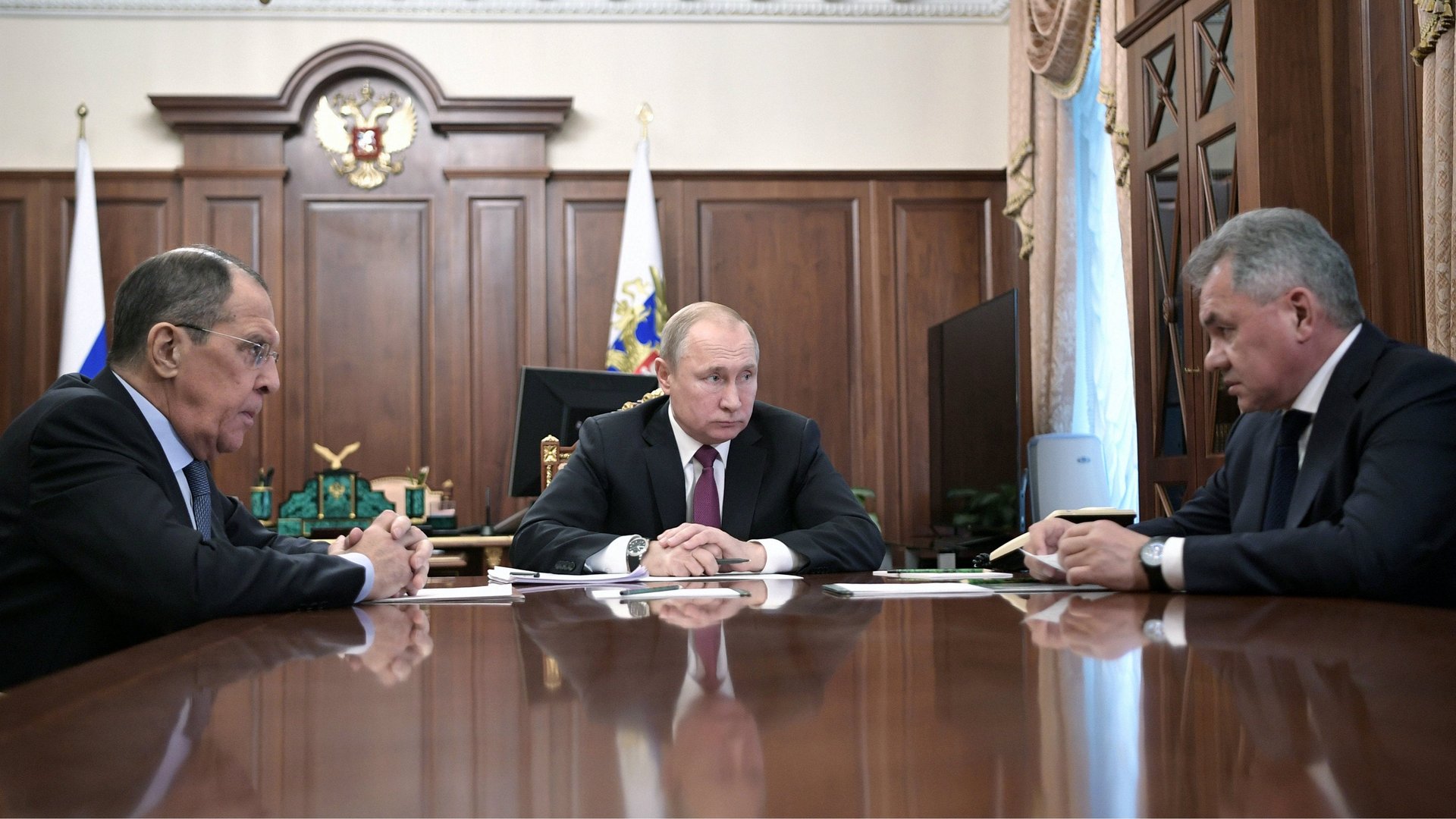Nuclear arms control is increasingly strained as Russia steps back from treaty
The nuclear arms controls that have been in place since the end of the Cold War appear increasingly strained. The US said yesterday (Feb. 1) that it will withdraw from a landmark treaty for such weapons that it signed with the Soviet Union in 1987. Russia responded today by saying it will also suspend its obligations under the agreement.


The nuclear arms controls that have been in place since the end of the Cold War appear increasingly strained. The US said yesterday (Feb. 1) that it will withdraw from a landmark treaty for such weapons that it signed with the Soviet Union in 1987. Russia responded today by saying it will also suspend its obligations under the agreement.
The US is pulling back from the treaty with the backing of its NATO allies because officials say Russia has built a cache of missiles and refuses to destroy them. Vladimir Putin, who claims his county is in compliance, has likewise complained that the Americans are potentially in breach of the agreement, which banned the use of short- and medium-range missiles by both countries. The Russian president said his country will begin developing new missiles.
“Our American partners announced that they are suspending their participation in the treaty, and we are suspending it too,” Putin said, according to the BBC.
The breakdown follows several years of failed negotiations. Carl Bildt, co-chair of the European Council on Foreign Relations, said on Twitter that the end of the treaty would allow Russia to deploy cruise missiles from ground launchers that would quickly threaten Europe. He says both sides should commit to not deploying new weapons, then address Russia’s controversial 9M729 missile systems “in detail.”
Even so, the Trump administration, which argues that Russia has long been in violation of the controls, appears to have support in Europe. “All [European] allies agree with the United States because Russia has violated the treaty for several years,” NATO secretary general Jens Stoltenberg said in an interview with the BBC. “They are deploying more and more of the new nuclear-capable missiles in Europe.”
Under the terms of the treaty, it will take six months for the agreement to dissolve. The US has given Russia six months to return to compliance with the treaty, and all parties should make the most of that window to find a resolution, Stoltenberg said.
One fear is that the breakdown will lead to a new arms race. The rising military threat posed by China, which is not part of the bilateral accord, is also a concern.
American officials have said those anxieties are unwarranted, and that the US isn’t developing mid-range nuclear missiles at this time. If, however, the sides don’t come to an agreement, the US will be free to develop short- and mid-range nuclear missiles—just like China, India, Pakistan, Israel, and North Korea.
With reporting assistance from Heather Timmons.